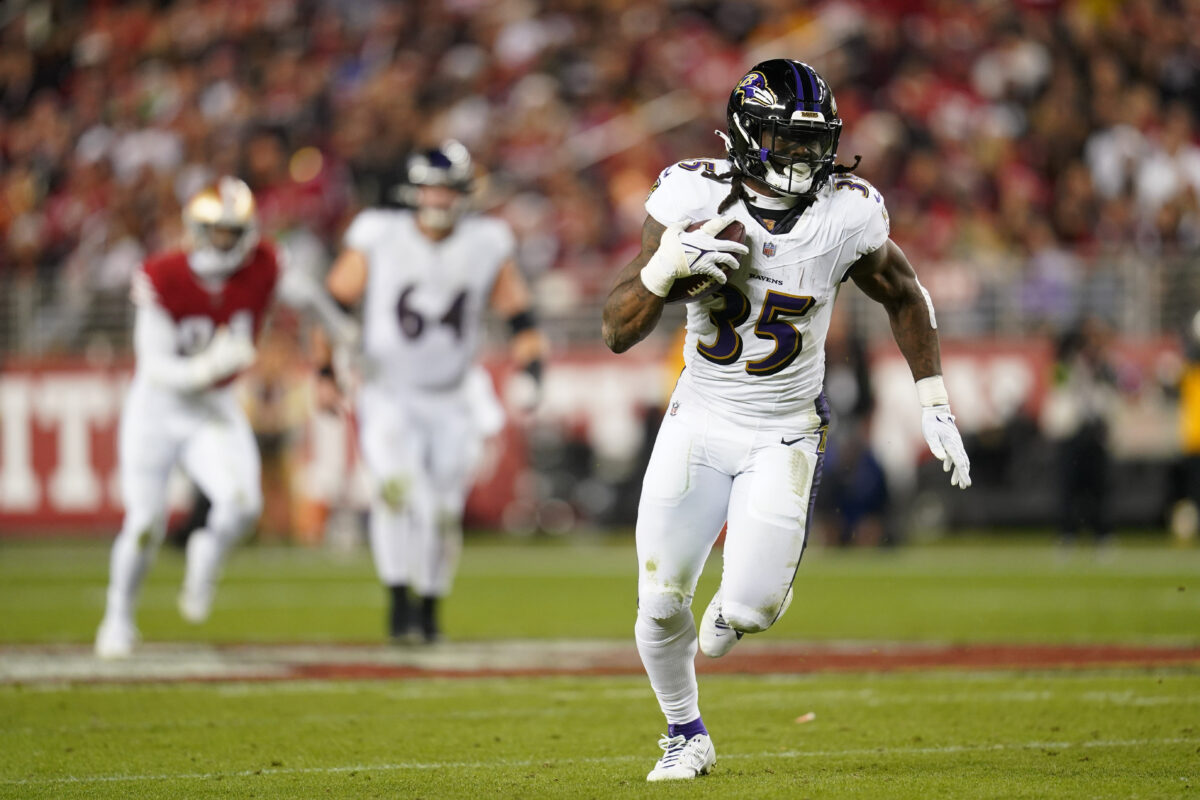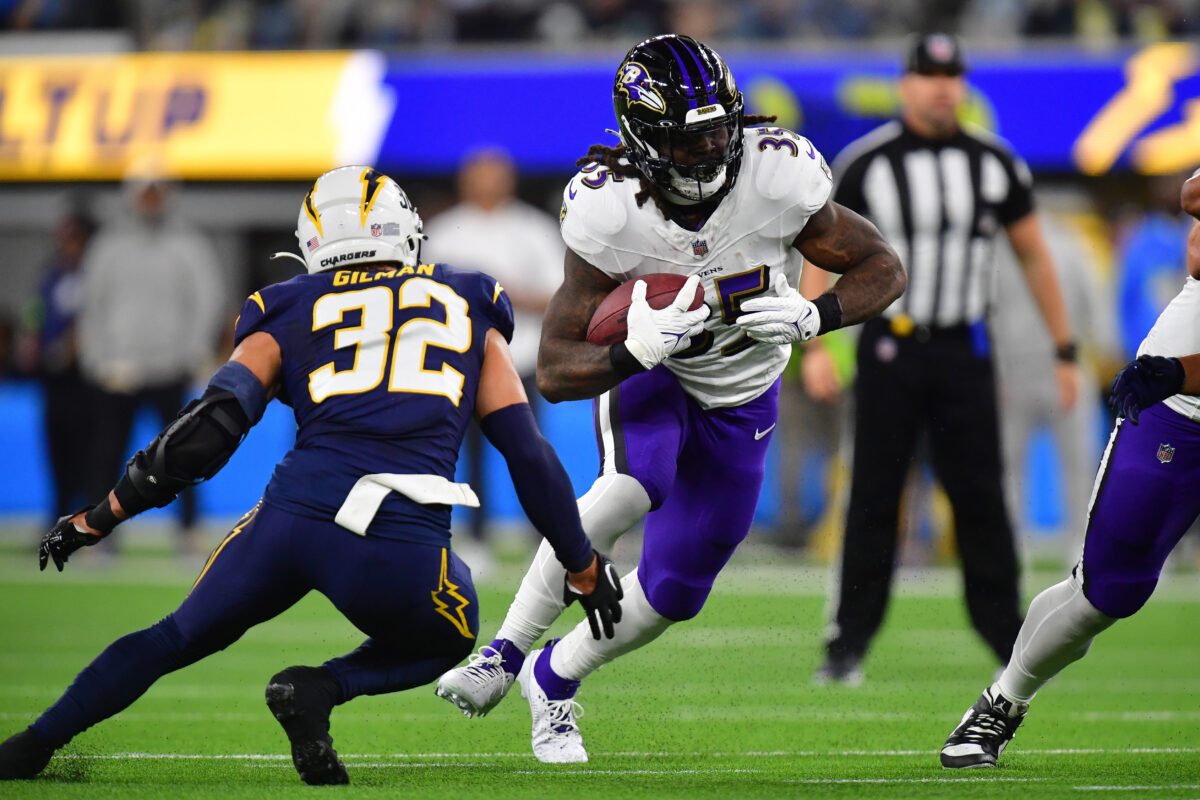Here is what the expected signing of Gus Edwards means for the Chargers.
The Chargers’ connections to Baltimore have not been understated, it appears.
With Jim Harbaugh’s brother John coaching the Ravens and GM Joe Hortiz coming over from Baltimore, Chargers fans connected the dots to a number of pending free agents from Baltimore’s playoff squad. On Monday, they nailed one, as former Ravens RB Gus Edwards agreed to terms with Los Angeles on a two-year deal.
Edwards has been a committee back for his entire career, but he rushed for a career-high 810 yards in 2023 despite his per carry averages falling from around 5 to just 4.1 this season. The six-year NFL vet was primarily used as Baltimore’s short yardage back, logging 13 touchdowns in 2023 after combining for 13 in his previous five seasons.
Los Angeles will hope that he can maintain a 700-800-yard clip over the next two seasons. Edwards has hit at least 700 rushing yards in four of his six seasons. In 2021, he missed the entire year with a torn ACL. He played only nine games in the 2022 season, limiting him to only 422 rushing yards. Edwards is also not a premier receiving back, with only 30 career receptions for 374 yards and no touchdowns.
With Edwards in the fold instead of one of free agency’s top backs, the Chargers will likely still target the position somewhat early in this year’s draft to add a more dynamic east-west presence. While new offensive coordinator Greg Roman majors in gap and power runs on the interior, which is where Edwards excels as well, Roman also installed a number of outside zone concepts for runners like JK Dobbins in the later versions of his offenses in Baltimore. Los Angeles lacks a rusher like that on the roster with only Isaiah Spiller and practice squad members returning in 2024.
Blake Corum, Michigan’s star running back widely mocked to the Chargers because of his connection to Harbaugh, does not exactly fit this bill. He’s much more similar to Edwards as a player, and his teammate Donovan Edwards – not in this year’s class – was more of the receiving and outside running option. But a back like USC’s MarShawn Lloyd could be in play as early as the third round. The Chargers hired Lloyd’s college running backs coach Kiel McDonald earlier this offseason to the same position. Other options could include Louisville’s Isaac Guerendo or New Hampshire’s Dylan Laube later in the draft.
Edwards turns 29 in April, a touch above the generally understood running back age curve of 28. But he’s also never been a true feature back, whereas most of the players who hit a wall in their age 28 season typically are. Outside of his torn ACL in 2021, Edwards has also only missed 12 games in five seasons—and a chunk of those were due to ACL recovery that stretched into 2022.
Details on Edwards’ contract were not yet available at the writing of this article, but his salary should not preclude the Chargers from continuing to be active at the margins of free agency.



